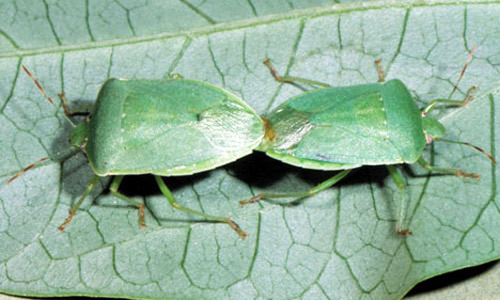green stink bug life cycle
Adults deposit barrel-shaped eggs. Southern green stink bug Life cycle.

Nature S Beauty Smartness The Southern Green Stink Bug Download Scientific Diagram
Wing pads are apparent and grow longer with each instar.
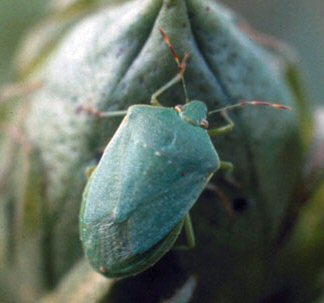
. It is most prevalent during the periods of October through December and again in March through April. The green stink bug has a single generation in northern areas such as Canada Javahery 1990 but in more favorable southern conditions there may be two generations Sailer 1953 Kamminga et al. They feed on a broad variety of fruits vegetables plants and trees.
It is thought that the differences in reproductive cycles. A few bugs may be present from May through June primarily brown stinkbugs but the green stink bug is more prevalent in mid to late June and tapers off in fruit trees in July and August with only one generation per year. The southern green stink bug is known to have up to four generations per year in warm climates.
Green Stink Bug Green Stink Bug Stink Bugs Green Bug Stink bug s search for overwintering sites in. The adults are brown in a mottled fashion with some green and red on the antennae. Biology Southern green stink bug Life cycle.
These bugs go through three different stages throughout their life cycle. Eggs clusters are generally laid on the underside of leaves and hatch in about 5 days. The eggs are glued firmly to each other and to the substrate and the egg package usually has a hexagonal shape.
A female stink bug can lay between 30 and 100 eggs at a time. Inspect crops twice weekly from budding until close to harvest the main risk period is at podding. The southern green stink bug has five nymphal instars.
Stink bug reproduction and life cycle. Depending upon the species and where they live the pests may create more than one generation per year up to 400 eggs during their lifetime. Stink bug adults will continue to feed and reproduce during summer.
Stink bugs are plant feeders. Nymphs are shaped similar to the adults but lack wings. Life cycle and appearance.
It is most prevalent during the periods of October through December and again in March through April. A second generation of. Stink bugs are active during spring and summer and migrate into homes and buildings around September and October to overwinter.
Look for the distinctive small egg rafts which indicate a green stink bug is present. Miner 1966 reported that the second generation remains in the cropping system throughout its life stages. Eggs clusters are generally laid on the underside of leaves and hatch in about 5 days.
Seeds are often flattened and shriveled. Typically all eggs in a. During a single lifetime.
A few bugs may be present from May through June primarily brown stinkbugs but the green stink bug is more prevalent in mid to late June and tapers off in fruit trees in July and August with only one generation per year. The degree of damage depends to some extent on the developmental stage of the plant when it is pierced by stink bugs. The morphological changes to the eggs and nymphs.
Immature fruit and pods punctured by bugs become deformed as they develop. The southern green stink bug. Sample crops in the early to mid-morning when bugs are more likely to be at the top of the crop.
Its light-green eggs are often laid on the underside of leaves deposited in masses of approximately 28 eggs. The southern green stink bug can complete its life cycle in 65 to 70 days. Life Cycle and Biology Green stink bugs become active during the first warm days of spring and this is when mating occurs.
Nymphs and adults of both kinds of stink bugs pierce plants with their needlelike mouthparts and suck sap from pods buds blossoms and seeds. The southern green stink bug can complete its life cycle in 65 to 70 days. 4 From left to right four nymphal stages of BMSB second through fifth instar adult male and adult female.
The authors go on to describe the green stink bugs life cycle seasonal biology host plants and management options such as pheromone trapping chemical control cultural control and biological. Nezara viridula goes through five nymphal instars. These bugs go through three different stages throughout their lifecycle.
Adult stink bugs tend to live between 6 8 months. The duration of each stage in the life cycle has been recorded at 26 12C. Typically all eggs in a cluster will hatch within 1-15 hours of each other.
The authors go on to describe the green stink bugs life cycle seasonal biology host plants and management options such as pheromone trapping chemical control cultural control and biological. The southern green stink bug overwinters as an adult and hides in the. The Brown Marmorated Stink Bug has early nymphs that are dark in color on the head and the pronotum.
The egg and the five nymphal instars are described and figured. The green stink bug is commonly found on the flower Sulviu splendens Ker-Gawl and is a minor pest of tomatoes and other vegetables. One stink bug species Brochymena arborea Say closely resembles the color and texture of tree bark on which it lives.
The Southern Green Stink Bugs have nymphs that are brown or dark brown in the early stages while as they age they become green with some white spots on the scrutellum. Eggs are laid in clusters of 30 130 on the under surface of leaves and on fruits in the upper portions of the plants. Beat-sheeting is the preferred sampling method for adults and nymphs.
A few bugs may be present from May through June but are more common in mid to late June and taper off in fruit trees in July and August with only one generation per year. The insects often seek shelter in tree bark weeds and similar outdoor environments during the warmer months. Both nymphs and adults feed on plants and fruit.
Several generations can be produced each year. The southern green stink bug is known to have up to four generations per year in warm climates. A second generation of.
Immature stages develop through five stages or instars that appear similar to adults except that they do not have fully developed wings. A series of PowerPoint slides illustrating the biology life cycle of the rice stink bug and the injury it causes to rice. Stink bugs typically mate in the spring and lay eggs in clusters also called masses on the undersides of leaves and on stems of plants.

Gatop50 Stink Bugs Bugwoodwiki
Green Stink Bugs In Macadamias Topics In Subtropics Anr Blogs
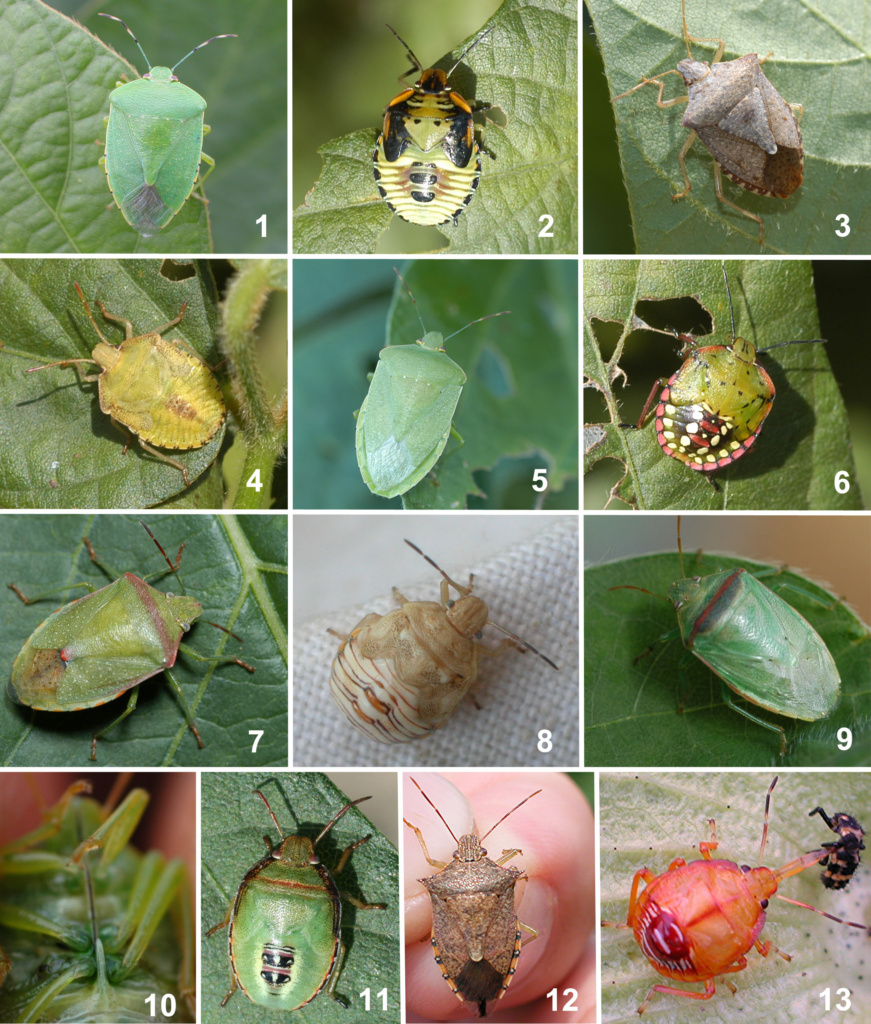
Stink Bugs And Redbanded Stink Bugs In Soybeans What To Do Mississippi Crop Situation

The Southern Green Stinkbug Nezara Viridula And Its Gut Symbiotic Download Scientific Diagram
Green Stink Bugs In Macadamias Topics In Subtropics Anr Blogs

Green Stink Bug Pests Soybean Integrated Pest Management Ipm Field Crops Purdue University
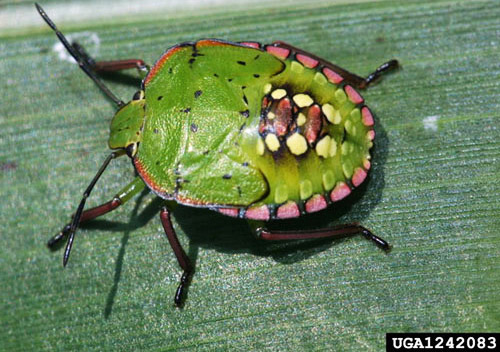
Southern Green Stink Bug Nezara Viridula Linnaeus

Southern Green Stink Bug Nezara Viridula Linnaeus

Redbanded Stink Bug Extension Entomology
Green Stink Bugs In Macadamias Topics In Subtropics Anr Blogs

Brown Marmorated Stink Bug Png Images Pngwing
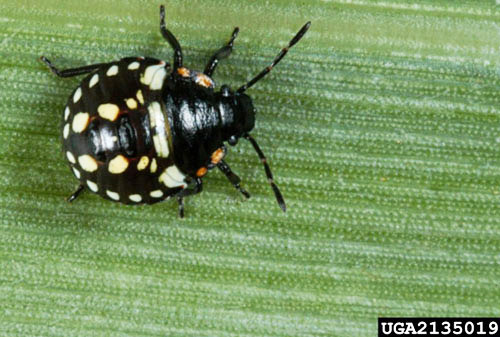
Southern Green Stink Bug Nezara Viridula Linnaeus

Green Stink Bugs Oklahoma State University

Southern Green Stink Bug Nezara Viridula Linnaeus
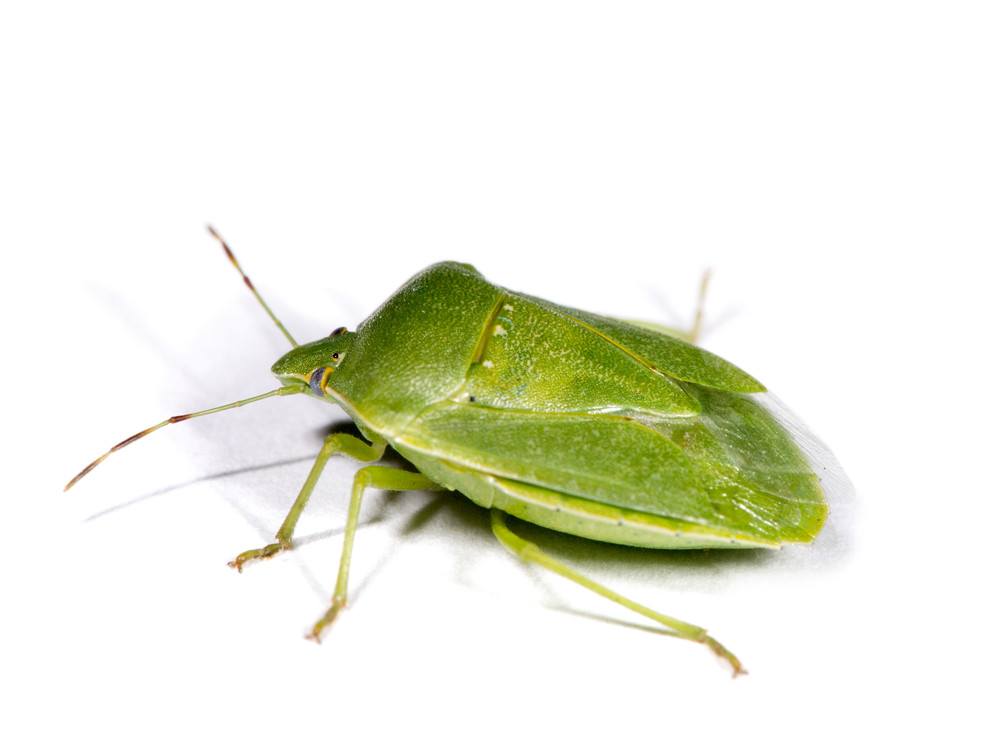
Green Stink Bug Interesting Facts Damage How To Get Rid Of Them Pest Wiki


